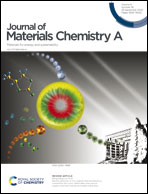Rising from the horizon: three-dimensional functional architectures assembled with MXene nanosheets
Abstract
MXenes, as an emerging family of two-dimensional (2D) materials, possess excellent conductivity, abundant hydrophilic surface groups, and a high proportion of redox-active transition metals, and thus recently have become a research hotspot. Furthermore, 2D MXene nanosheets have been widely explored with superior performances in a broad spectrum of applications. To maximize the inherent properties of MXenes for specific applications, assembling 2D MXenes into three-dimensional (3D) architectures has been actively pursued and significant achievements have been made. In this review, we present the design and performance of 3D MXene-based functional architectures. Specifically, we elaborate some typical methodologies for the 3D assembly of MXenes, including that assisted by ions/molecules, graphene oxide, and other materials, the hard-template method, soaking method, and 3D printing. Additionally, the competitive performances of 3D MXene-based materials are exemplified, covering their applications for electrochemical energy storage, electromagnetic interference shielding, sensors, photocatalysis, and water purification, with the focus on objectively analyzing their structure-dependent performances. Finally, some noteworthy research directions expanding from fundamental understanding to material design are proposed, which is expected to inspire the rational engineering of customized 3D MXene-based architectures toward target applications.

- This article is part of the themed collection: Journal of Materials Chemistry A Recent Review Articles


 Please wait while we load your content...
Please wait while we load your content...